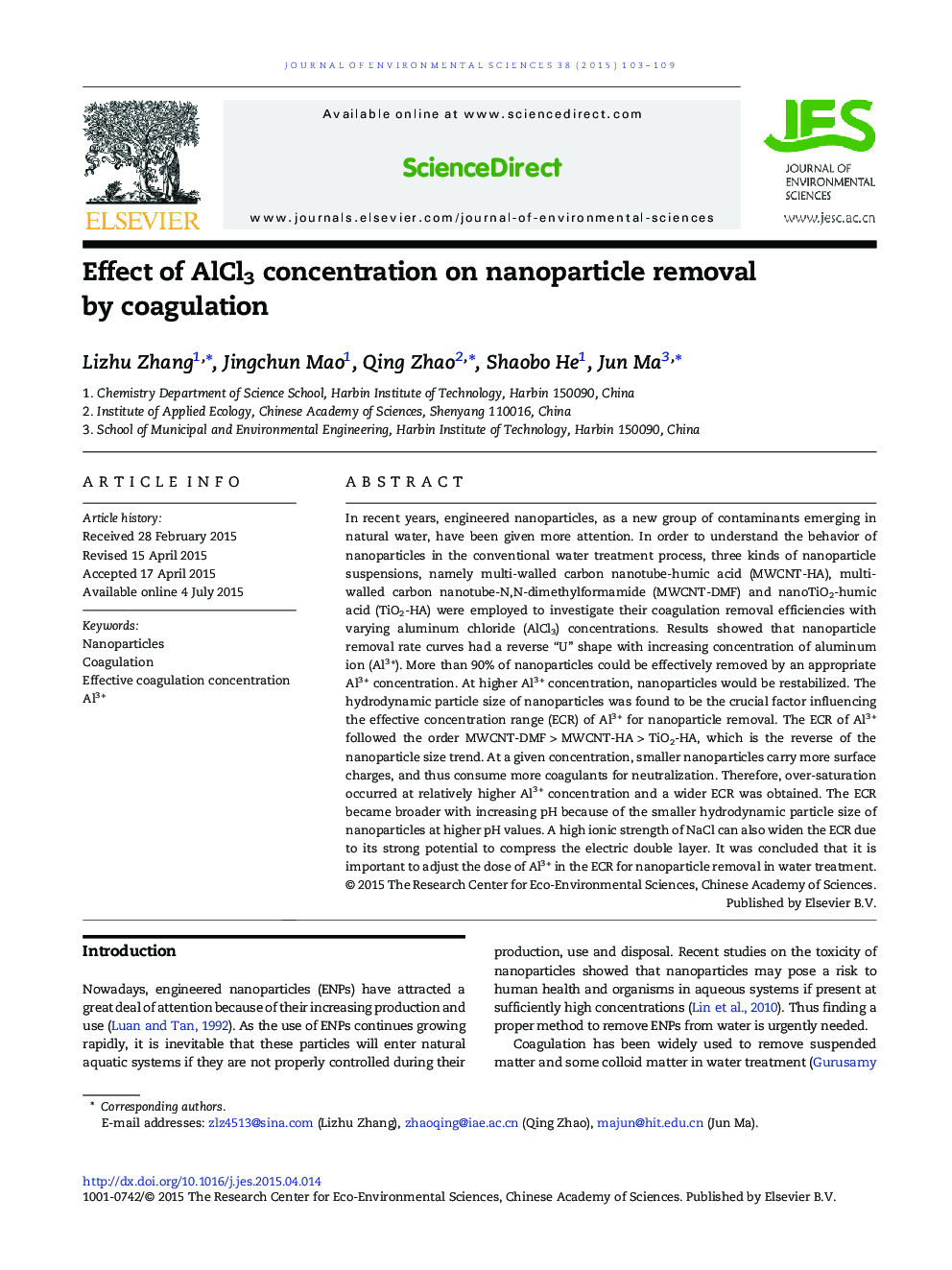| Article ID | Journal | Published Year | Pages | File Type |
|---|---|---|---|---|
| 4453853 | Journal of Environmental Sciences | 2015 | 7 Pages |
In recent years, engineered nanoparticles, as a new group of contaminants emerging in natural water, have been given more attention. In order to understand the behavior of nanoparticles in the conventional water treatment process, three kinds of nanoparticle suspensions, namely multi-walled carbon nanotube-humic acid (MWCNT-HA), multi-walled carbon nanotube-N,N-dimethylformamide (MWCNT-DMF) and nanoTiO2-humic acid (TiO2-HA) were employed to investigate their coagulation removal efficiencies with varying aluminum chloride (AlCl3) concentrations. Results showed that nanoparticle removal rate curves had a reverse “U” shape with increasing concentration of aluminum ion (Al3 +). More than 90% of nanoparticles could be effectively removed by an appropriate Al3 + concentration. At higher Al3 + concentration, nanoparticles would be restabilized. The hydrodynamic particle size of nanoparticles was found to be the crucial factor influencing the effective concentration range (ECR) of Al3 + for nanoparticle removal. The ECR of Al3 + followed the order MWCNT-DMF > MWCNT-HA > TiO2-HA, which is the reverse of the nanoparticle size trend. At a given concentration, smaller nanoparticles carry more surface charges, and thus consume more coagulants for neutralization. Therefore, over-saturation occurred at relatively higher Al3 + concentration and a wider ECR was obtained. The ECR became broader with increasing pH because of the smaller hydrodynamic particle size of nanoparticles at higher pH values. A high ionic strength of NaCl can also widen the ECR due to its strong potential to compress the electric double layer. It was concluded that it is important to adjust the dose of Al3 + in the ECR for nanoparticle removal in water treatment.
Graphical abstractSchematic model of the effect of ionic strength on nanoparticle coagulation.Figure optionsDownload full-size imageDownload as PowerPoint slide
